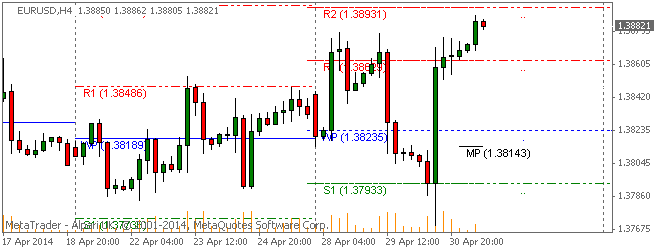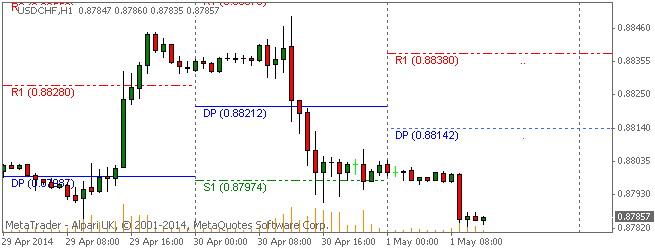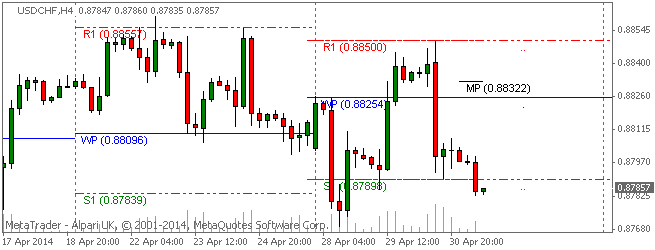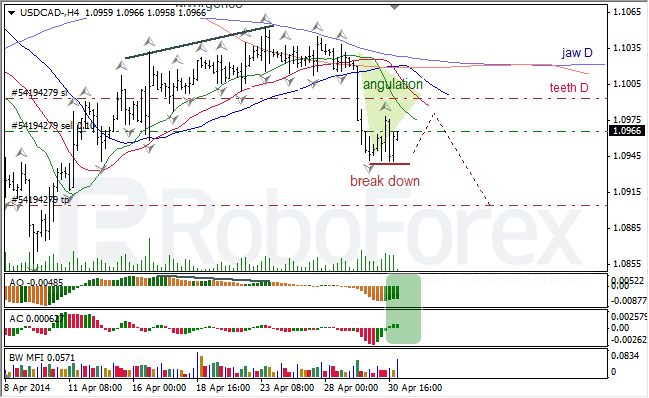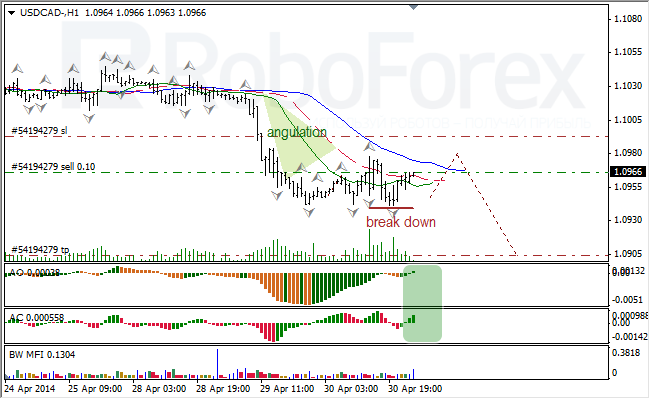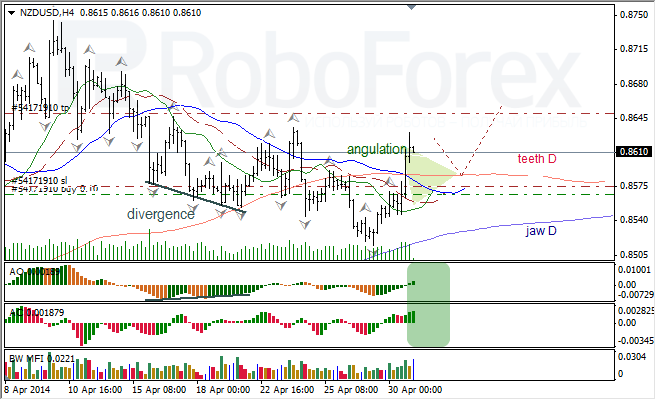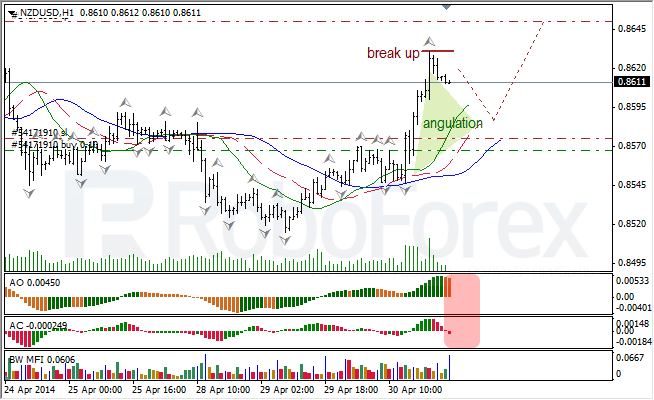Source: Kevin Michael Grace of The Gold Report (4/30/14)
http://www.theaureport.com/pub/na/duncan-hughes-quartet-of-high-grade-winners
With gold hovering around $1,300 an ounce, there’s not much room for error, says Duncan Hughes of RFC Ambrian. In this interview with The Gold Report, Hughes counsels that investors should seek high-grade, low-cost projects with exploration upside in stable jurisdictions. He suggests three such companies in West Africa and another with silver, gold and antimony resources in Chile and Australia.
The Gold Report: After hitting $1,380 an ounce ($1,380/oz) in March, gold fell below $1,300/oz and has hovered around there since then. Do you expect the price to change much either way in the next few months?
Duncan Hughes: That’s not easy to predict. I think $1,300/oz seems a sensible assumption for 2014. If it were to fall much below that, most of the sector would be operating at a loss.
TGR: Assuming a gold price of $1,300/oz, what are the qualities that will distinguish the junior gold companies that become successful?
DH: In the recent past, companies paid too much attention to the size of resources and potential scales of production. The focus now is profitable production scenarios. Low-cost producers and undervalued developers that look likely to become low-cost producers are the key for investors.
One way to achieve stronger profit margins is through higher-grade ore bodies. Grade has always been king but is now even more so. Low-cost producers are not only most likely to survive this difficult market; those making profits may also pay dividends. Given that share-price appreciation is more challenging than previously, dividends have become more attractive.
TGR: To what extent should investors restrict themselves to companies with management teams with winning track records?
DH: If I were an investor, I’d look for management with a track record. If management doesn’t have that track record—not only finding mines but bringing them to production—then the asset is the overriding factor. If the asset is strong enough, I’d want board members with a nice mix of technical skills—a geologist, an engineer, perhaps even a metallurgist—complemented by members with financial skills and access to equity and debt finance.
TGR: After rejecting a bid from Goldcorp Inc. (G:TSX; GG:NYSE), Osisko Mining Corp. (OSK:TSX) has agreed to a friendly takeover by Yamana Gold Inc. (YRI:TSX; AUY:NYSE; YAU:LSE) and Agnico-Eagle Mines Ltd. (AEM:TSX; AEM:NYSE). Does this battle over Osisko suggest we will see an increase in mergers and acquisitions (M&As)?
DH: There have been rumors about Barrick Gold Corp. (ABX:TSX; ABX:NYSE) and Newmont Mining Corp. (NEM:NYSE) getting together. I do anticipate an increase in M&As in the gold space. Capital expenses (capexes) are generally smaller there, as compared to the iron ore space, where they run into the billions.
Many gold explorers are looking to reinvent themselves to stay alive. Companies with projects but no money will look for companies with cash but no projects and vice versa. There are a lot of opportunities out there at current pricing.
TGR: Which type of company is most likely to be taken out?
DH: Because funding is much harder to secure than it once was, the main focus will be developers with strong projects that require significant initial capital expenditures. We saw this with the takeover of PMI Gold Corp. by Asanko Gold Inc. (AKG:TSX; AKG:NYSE.MKT). Asanko had a large cash balance, and PMI had a good project. Other examples would be Endeavour Mining Corp.’s (EDV:TSX; EVR:ASX) buyout of Adamus Resources Ltd. for its Nzema project in Ghana and B2Gold Corp.’s (BTG:NYSE; BTO:TSX; B2G:NSX) acquisition of Volta Resources Inc. for its Kiaka project in Ghana.
We’re also seeing this in the Australian junior space. Gold producer Northern Star Resources Ltd. (NST:AUX) has recently acquired Barrick’s West Australian gold assets.
TGR: Are there any likely takeover candidates among the companies you cover?
DH: Two quality juniors with good projects facing capex challenges are Papillon Resources Inc. (PIR:ASX) and its Fekola project in Mali, and Orbis Gold Ltd. (OBS:ASX) with its Natougou project in Burkina Faso. Fekola will cost about $300 million ($300M) and Natougou about $200M. It would have been pretty easy for these companies to have found such financing in 2007, but it’s difficult now.
The likes of Randgold Resources Ltd. (GOLD:NASDAQ; RRS:LSE), Endeavour or B2Gold might be looking at these opportunities.
TGR: Is there a capex sweet spot for these midlevel project takeovers, $200–300M, perhaps?
DH: That sounds about right. Papillon’s market cap is $416M, so when you add the takeover premium, you’re getting up there. Orbis’ market cap is only $60M, so that’s a different story.
TGR: What’s your top Buy recommendation?
DH: Mandalay Resources Corp. (MND:TSX). This is a good example of a low-cost producer that pays dividends.
TGR: Mandalay announced on April 23 its intention to borrow $60M. What’s the reason for this?
DH: The announcement states that it is to take advantage of opportunities in current debt markets. Mandalay has long said it is looking to acquire undervalued assets, as it has done successfully in the past. The opportunity to tap into a debt facility obviously puts Mandalay in a much stronger position to make further acquisitions.
TGR: How does Mandalay’s acquisition of the Challacollo silver-gold project in Chile complement its Cerro Bayo silver-gold project in Chile?
DH: I wouldn’t say they really complement each other as they’re geographically a long way apart: Challacollo is in northern Chile and Cerro Bayo is down in Patagonia. Challacollo will not go into production for several years. It’s more a case of management following its strategy. Mandalay said it would pick up an undervalued high-quality asset, and Challacollo certainly looks to be that. More metallurgical work needs to be done, but Challacollo has good potential to be a low-cost silver producer.
Mandalay is still all about two successful operations. Cerro Bayo produces silver (after gold credits) at $11/oz all-in. That’s low cost. Cerro Bayo was not being mined optimally by Coeur Mining Inc. (CDM:TSX; CDE:NYSE) when Mandalay bought it in 2010. Now Mandalay is making a nice profit on it. Costerfield, Mandalay’s gold-antimony mine in Australia, has always been a challenging project. Mandalay has turned it around and made it profitable as well.
TGR: Mandalay shares are trading at $0.93. Is it undervalued?
DH: Yes, considering the possibility of expansion in 2014 and the fact that Mandalay is actually making money at current metals prices. Cerro Bayo and Costerfield are high-grade operations, and when you do a standard discounted cash flow model, you obviously can’t factor in too much future production. This means that the net present value you generate probably doesn’t do the company justice given that it takes many years to drill out the resources and reserves of these ore bodies.
At Cerro Bayo, for example, Mandalay recently had some really significant exploration drill results, demonstrating that the current veins being mined continue for some distance under the shallow Laguna Verde. I don’t think the market has picked up on the significance of that.
TGR: You called Papillon’s Fekola gold project in Mali “good.” How good is it?
DH: It would be difficult to find another junior gold project as good as Fekola. It has 5.15 million ounces (5.15 Moz) at 2.4 grams per ton (2.4 g/t) with good metallurgy and low strip ratios. It could be mined from one open pit, and recent company work has suggested that there may be opportunities for shallow satellite pits as well. Production is forecast to begin in 2017: 320,000/oz per year over the first 11 years at an all-in cost of $740/oz.
And Papillon has strong management. Mark Connelly is the CEO. He worked at Adamus and has developed projects from exploration through to production. The non-executive chairman, Ian Middlemas, has a strong track record of developing projects to the point of being taken out. Fekola is close to Randgold’s 17.9 Moz Loulo-Gounkoto projects, AngloGold Ashanti Ltd.’s (AU:NYSE; ANG:JSE; AGG:ASX; AGD:LSE) 13.1 Moz Sadiola project and Endeavour’s 3.8 Moz Segala/Tabakoto project. Given Middlemas’ track record, I would say that Papillon has to be a target.
TGR: Could you compare Papillon to another company operating in Mali, Legend Gold Corp. (LGN:TSX.V)?
DH: Legend’s Tiekoumala project is at a much earlier stage than Fekola and has 590,000 oz (590 Koz) Indicated and Inferred. Legend has just announced a joint-venture agreement with Randgold on seven of its permits. Randgold is, of course, a producer with high-quality assets throughout Africa.
TGR: How should investors balance potential reward and risk in West Africa, specifically with regard to the various gold-producing jurisdictions?
DH: Several years ago, gold companies in West Africa traded at a premium because of the excellent exploration opportunities engendered by the geology. Since then markets have changed, and investors have become risk averse. In Africa, we have seen the Arab Spring, a push for nationalization and the coup in Mali. These events remind investors that the African political landscape is not as secure as some other parts of the world.
But the geology of the Birimian Greenstone Belt hasn’t changed. A number of countries, such as Côte d’Ivoire, Liberia and Burkina Faso, have vast fortunes in land that is still relatively underexplored. Ghana has a track record of political stability and stable gold production. Next door, in Côte d’Ivoire, which lacks this stability, there is the same geology but many fewer mines. Guinea is working through a new mining code, and I would say that it is still a risky place to consider.
Burkina Faso, on the other hand, is a great place. It has got seven gold mines coming into production there.
TGR: Liberia was considered a failed state for decades. How great has its recovery been?
DH: I see real opportunity there. It’s like Burkina Faso, at an earlier stage of development, obviously. I visited after the 2011 election, which was peaceful. Ellen Johnson Sirleaf, who won the Nobel Peace Prize that year, was re-elected.
I met the minister of mining and came away with the feeling that the Liberian government is very supportive of mining. Before the political strife began in 1980, Liberia was a significant iron ore producer and retains that infrastructure.
TGR: Which gold company in Liberia do you rate a Buy?
DH: Aureus Mining Inc. (AUE:TSX; AUE:LSE) is looking to bring Liberia’s first gold mine, the New Liberty mine, into production in Q1/15. The government demonstrated its support of the company by amending its mineral development agreement and reducing the corporate tax rate from 30% to 25%, while reaffirming the 3% royalty.
The government takes a 10% free carry. This is typical in West Africa. New Liberty’s license has been affirmed for 13 years, which is more than Aureus needs based on current reserves.
TGR: Aureus closed a $15M offering April 22. What’s the significance of that?
DH: I wasn’t expecting it because the company went to the market late last year to raise money for exploration. That made sense because Aureus has excellent exploration upside. Going back to the market now suggests that it might be falling slightly short of the $125M New Liberty capex requirement. I would hope that only a small part of the $15M financing will be needed for New Liberty and that the rest will be used for exploration.
TGR: What’s the size of the resource at New Liberty?
DH: It is 924 Koz at 3.4 g/t and a quite high strip ratio. According to the definitive feasibility study, the mine is expected to produce 119 Koz annually for the first six years of production at $900/oz. This should be a profitable operation.
TGR: That’s a short mine life. How much exploration potential do you see?
DH: A lot. Not necessarily at New Liberty itself but instead at Aureus’ Ndablama project about 40 kilometers away. In that part of the world, that’s probably a bit too far to truck to New Liberty, but what’s exciting about Ndablama is that it is shaping up to be another standalone gold operation. New Liberty is the present, but Ndablama is probably the future.
TGR: How good is Orbis’ Natougou project in Burkina Faso?
DH: It’s the grade that wins there: 1.8 Moz at 3.7 g/t with good metallurgy. All shallow and open-pittable, a relatively flat-lying ore body. It should be profitable and has the opportunity for a quick payback because the high-grade comes to the surface. It has quite a high strip ratio, but the exploration upside at Natougou is substantial. Less than 5% of a 50-square-kilometer gold anomaly has been tested, but the company is quite rightly focused on developing Natougou first.
Orbis also has very strong exploration ground elsewhere in Burkina Faso, in the Houndé Greenstone Belt, which hosts SEMAFO Inc.’s (SMF:TSX; SMF:OMX) Mana operation and also Roxgold Inc.’s (ROG:TSX.V) Yaramoko project. It’s a very fertile belt, and Orbis has been hitting some really exciting intersections there. All this and a market cap of only $60M makes for a good opportunity. Natougou is a good two years away from production. Orbis is doing a feasibility study now. We estimate that permitting should take about one year. I have a Buy rating on Orbis and a target price of $0.70, which is significantly higher than the $0.26 it trades at now.
TGR: SEMAFO has had a great deal of trouble in recent years, and in response the company has consolidated its operations. SEMAFO is pretty well just Mana now. How much difference will this make?
DH: I think it will make a difference. SEMAFO’s other operations in Niger and in Guinea were not the big picture; Mana has always been the prize asset. It’s a great project: 2.3 Moz at a pretty good grade of 2.8 g/t. The question for the company is whether its billion-dollar market cap can be justified based solely on Mana.
TGR: Sticking with Burkina Faso, how do you rate B2Gold and Roxgold’s assets there?
DH: B2Gold, because it has assets throughout the world, is not a peer of Orbis. Kiaka, however, which B2Gold acquired from Volta, can be compared to Orbis’ Natougou. Kiaka’s a big project, but it’s very low grade. I think that in this market it would be very difficult to get it up and running.
Kiaka looks to be a project waiting for the gold price to lift substantially because in order to justify the high capex, B2Gold would need to put through a lot of tons to get the economies of scale with the low-grade ore.
TGR: How is Roxgold doing on grade?
DH: Yaramoko is a great asset: a probable resource of 759 Koz at 11.8 g/t. It’s going to be an underground operation rather than open pit. And Roxgold’s market cap is $163M, which is more than twice Orbis’ market cap. But that’s the premium you’d expect given the grade.
TGR: We recently did an interview with analyst Richard Karn and he pointed out that 200 of the 700 ASX-listed mining and resource companies are effectively moribund.
DH: You could make a similar judgment about the TSX Venture Exchange.
TGR: Certainly. Karn argued that the culling of these “zombie” companies would be a positive step. Do you agree?
DH: Yes. Many companies on the Australian Stock Exchange, the TSX Venture Exchange and London’s AIM exchange are not going to make it, and that consolidation will be a good thing. As I mentioned earlier, investors in the recent past just looked at the size of a resource and said, “Wow. There’s 2 Moz there, and this stock looks cheap.” But they weren’t looking at the quality of those ounces. I think investors have since wised up. Too late, however, for many companies.
TGR: Some 12 months ago, when it seemed that gold might fall to $1,000/oz, financing pretty much dried up. Now that gold seems to have stabilized around $1,300/oz, has the funding picture improved?
DH: I don’t think it has improved that much yet. You said that the gold price seems to have settled, but let’s face it, this stability has only existed for a very short time. I think major financiers and the equity markets need to be persuaded that there is a floor of perhaps $1,200–1,300/oz. When this occurs, funding will improve.
TGR: Duncan, thank you for your time and your insights.
Duncan Hughes has been head of research for RFC Ambrian Ltd. in Perth, Australia, since 2010. A geologist, he has more than 15 years of experience in the resources industry and managed the discovery and development of the Prospero, Tapinos and Alec Mairs ore bodies for Jubilee Mines/Xstrata. He worked previously for CD Capital and Linq Capital. He holds a Bachelor of Science (Honors) from Oxford Brookes University and a Master of Business Administration from Imperial College London.
For additional comments on Goldcorp Inc., Osisko Mining Corp., Papillon Resources Inc., Orbis Gold Ltd., Roxgold Inc., SEMAFO Inc., Randgold Resources Ltd., Mandalay Resources Corp., Northern Star Resources Ltd. , Asanko Gold Inc. , Agnico-Eagle Mines Ltd., Endeavour Mining Corp., B2Gold Corp., Barrick Gold Corp., Newmont Mining Corp, Legend Gold Corp.,and Yamana Gold Inc.from newsletter writers, money managers and analysts, click on their respective links or visit The Gold Report.
Want to read more Gold Report interviews like this? Sign up for our free e-newsletter, and you’ll learn when new articles have been published. To see recent interviews with industry analysts and commentators, visit our Streetwise Interviews page.
DISCLOSURE:
1) Kevin Michael Grace conducted this interview for Streetwise Reports LLC, publisher of The Gold Report, The Energy Report, The Life Sciences Report and The Mining Report, and provides services to Streetwise Reports as an independent contractor. He owns, or his family owns, shares of the following companies mentioned in this interview: None.
2) The following companies mentioned in the interview are sponsors of Streetwise Reports: Mandalay Resources Corp. and Roxgold Inc. Goldcorp Inc. is not affiliated with Streetwise Reports. Streetwise Reports does not accept stock in exchange for its services.
3) Duncan Hughes: I own, or my family owns, shares of the following companies mentioned in this interview: None. I personally am, or my family is, paid by the following companies mentioned in this interview: None. My company has a financial relationship with the following companies mentioned in this interview: Orbis Gold Ltd. and Mandalay Resources Corp. I was not paid by Streetwise Reports for participating in this interview. Comments and opinions expressed are my own comments and opinions. I had the opportunity to review the interview for accuracy as of the date of the interview and am responsible for the content of the interview.
4) Interviews are edited for clarity. Streetwise Reports does not make editorial comments or change experts’ statements without their consent.
5) The interview does not constitute investment advice. Each reader is encouraged to consult with his or her individual financial professional and any action a reader takes as a result of information presented here is his or her own responsibility. By opening this page, each reader accepts and agrees to Streetwise Reports’ terms of use and full legal disclaimer.
6) From time to time, Streetwise Reports LLC and its directors, officers, employees or members of their families, as well as persons interviewed for articles and interviews on the site, may have a long or short position in securities mentioned. Directors, officers, employees or members of their families are prohibited from making purchases and/or sales of those securities in the open market or otherwise during the up-to-four-week interval from the time of the interview until after it publishes.
Streetwise – The Gold Report is Copyright © 2014 by Streetwise Reports LLC. All rights are reserved. Streetwise Reports LLC hereby grants an unrestricted license to use or disseminate this copyrighted material (i) only in whole (and always including this disclaimer), but (ii) never in part.
Streetwise Reports LLC does not guarantee the accuracy or thoroughness of the information reported.
Streetwise Reports LLC receives a fee from companies that are listed on the home page in the In This Issue section. Their sponsor pages may be considered advertising for the purposes of 18 U.S.C. 1734.
Participating companies provide the logos used in The Gold Report. These logos are trademarks and are the property of the individual companies.
101 Second St., Suite 110
Petaluma, CA 94952
Tel.: (707) 981-8999
Fax: (707) 981-8998
Email: jluther@streetwisereports.com

